Greentropia
Greentropia (formerly Internet of Plants) is a project aimed at automating the growing of plants, with the following long-term goals:
- Creating easy to use, affordable products to monitor and maintain plants at home, at the office and elsewhere.
- Enabling effective, affordable and highly scalable indoor farming solutions.
- Eliminating the transport of food around the world by producing it locally instead.
- Enabling self-sufficient colonies at any outpost of civilisation, whether on Earth, on another planet or in space.
For the indoor farming solutions, there are a number of reasons and targets which underlie the project. These include:
- Eliminating the use of insecticides and herbicides in farming through a controlled environment.
- Eliminating the use of single-use plastics in food production by bringing production closer to the place of consumption.
- Eliminating run-off from fertiliser and similar into the environment.
- Reducing the footprint needed for food production.
- Reducing food wasted due to long supply chains.
The properties that help hereby are that indoor farming can be done in an environment that is completely isolated from the outside environment, as well as in any building in any location in the world. This makes it a highly flexible solution for any community in the world.
Another important aspect of the project is to act as a test bed for various technologies and as a public outreach project for students and the general public. Due to its broad scope, the project offers a wide range of topics that range from biology to electronics to biochemistry, chemistry, physics (aerodynamics, thermodynamics) and even anthropology, making it an excellent platform for study and science.
Challenges with the project are mostly found in optimising plant growth, monitoring plant health and reducing the energy investment for the output of fruits, vegetables and so on. Fertilising certain flowers with or without natural pollinators is another major question, as are optimal soil irrigation and hydroponics and fogponics maintenance strategies. Finally, reducing the need for artificial lighting by combining it with natural sunlight is a major sub-project.
In summary, the central goal of Greentropia is to show the world a different way that we can use this planet. Reducing our ecological footprint, while improving life for everyone.
Project log
After a long few months, we have all of the plants moved into the new and for now final shelves. A number of new plants have joined the ranks, mostly in the hydroponics setup, but also in the form of the tomato plants, which have taken control of one of the shelves at this point:
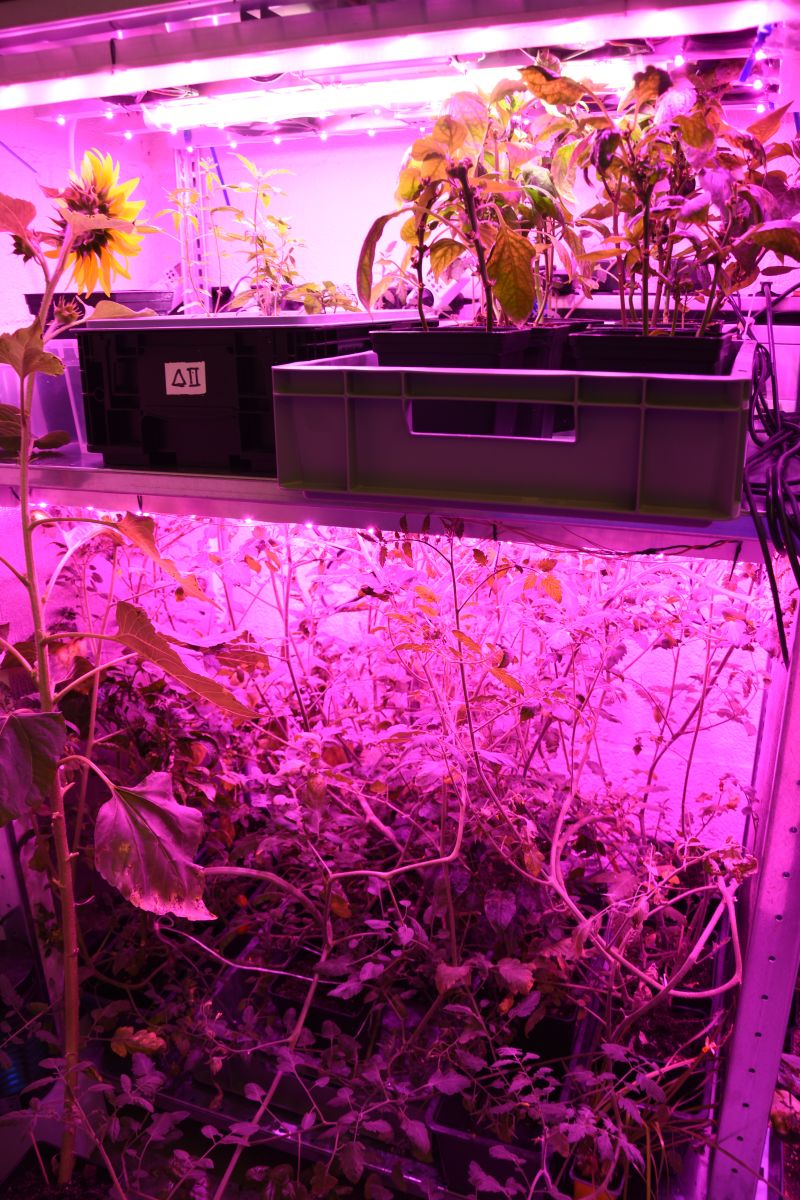
Note the use of both low and high height shelves.
We created light fixtures for these new shelves, which include full-spectrum growing LEDs, in addition to the LED drivers, cooling fans and air circulation fans. These attach inside the shelves using an easy to use magnetic attachment system:
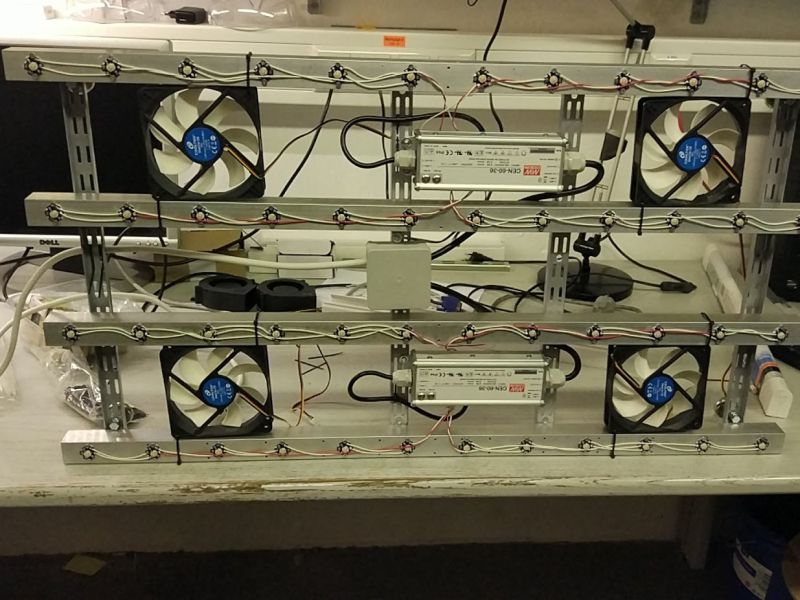
Another one of the shelves, with calypso plant and bell peppers. In front is also a persimmon tree:
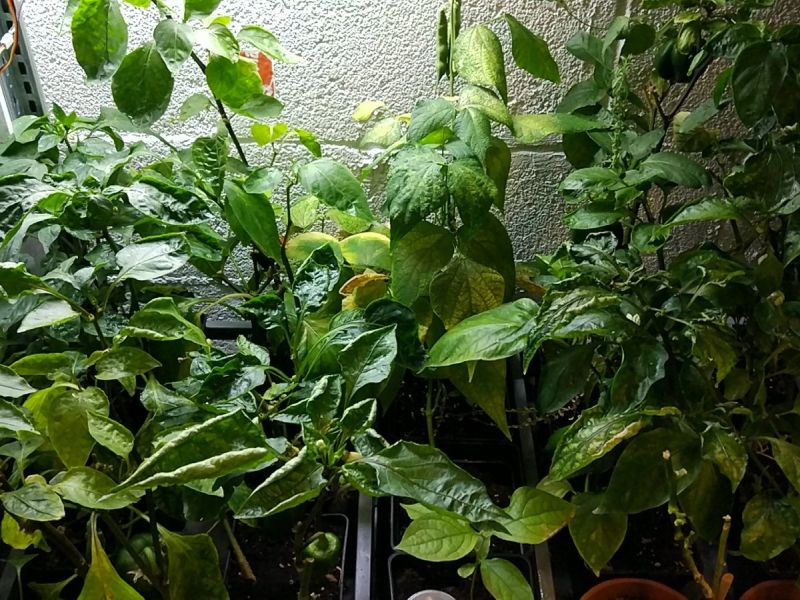
After starting the project earlier this year, the focus has been on selecting and validating the sensors, pumps and lighting hardware that will be used. This has led us to pick capacitive soil humidity sensors, along with peristaltic pumps to provide automated irrigation for small (1-16 plants) setups.
For gathering information on the behaviour of the 555 timer circuit-based capacitive soil sensor, we set up a simple test involving a singular plant for which the soil humidity got measured, with a corresponding peristaltic pump providing water to the plant's soil based on a predefined trigger point.
So far this has managed to keep the plant alive for months now without manual intervention, while allowing us to gather a lot of data on the behaviour of these sensors as well as on the effective delivery of water, such as the delivery location, so as to not cause too short of a feedback loop between the application of the water and the sensor reading the 'all clear' level before the plant's roots have had a chance to fully be supplied with water.
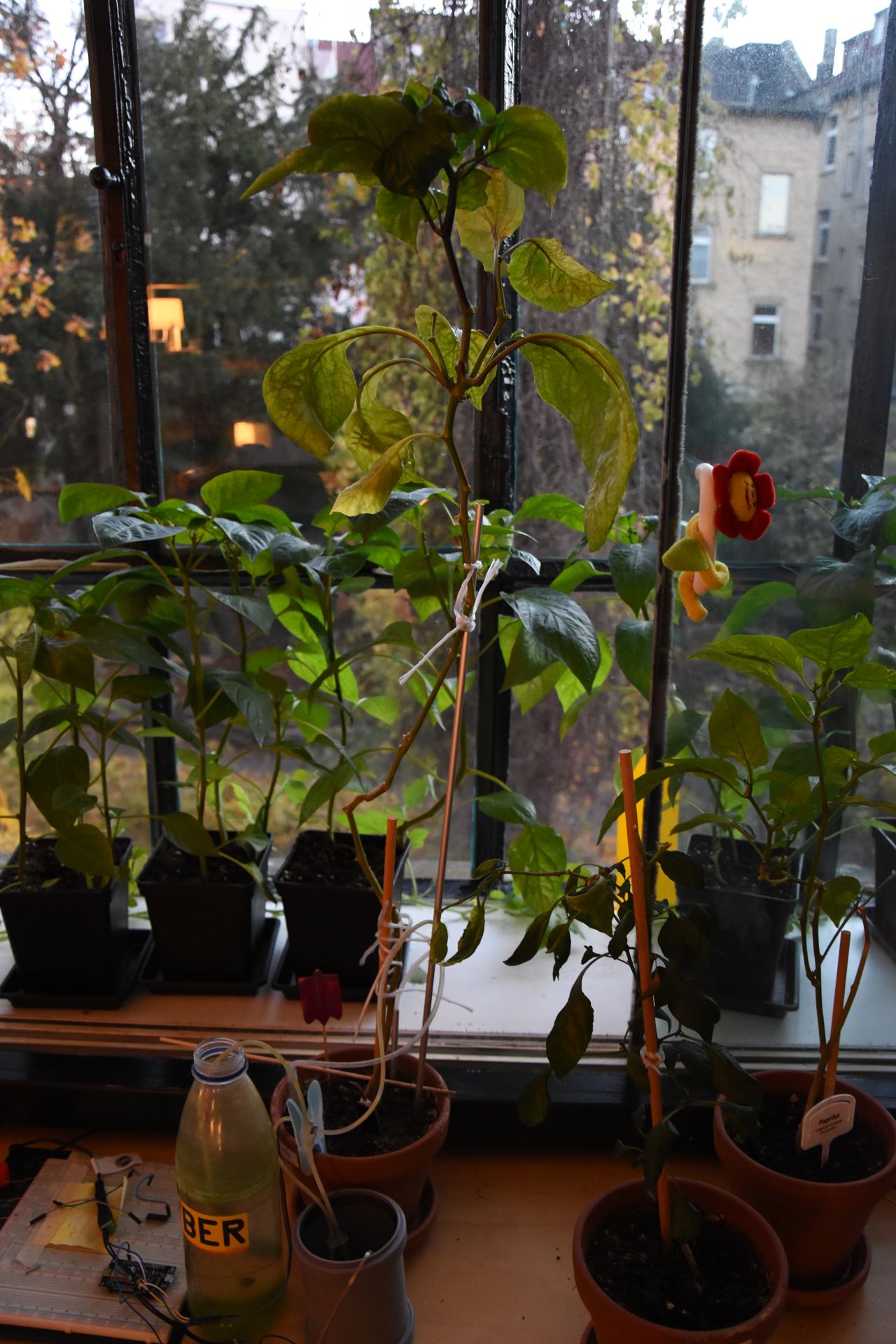
Specific to the indoor farming setup are the grow LED lights. Here we ran a number of tests on a variety of grow lights, ranging from simple LED strips to 5W full spectrum LEDs. These are to be integrated into a shelf-based setup for the next step, for which we already have begun integration tests:
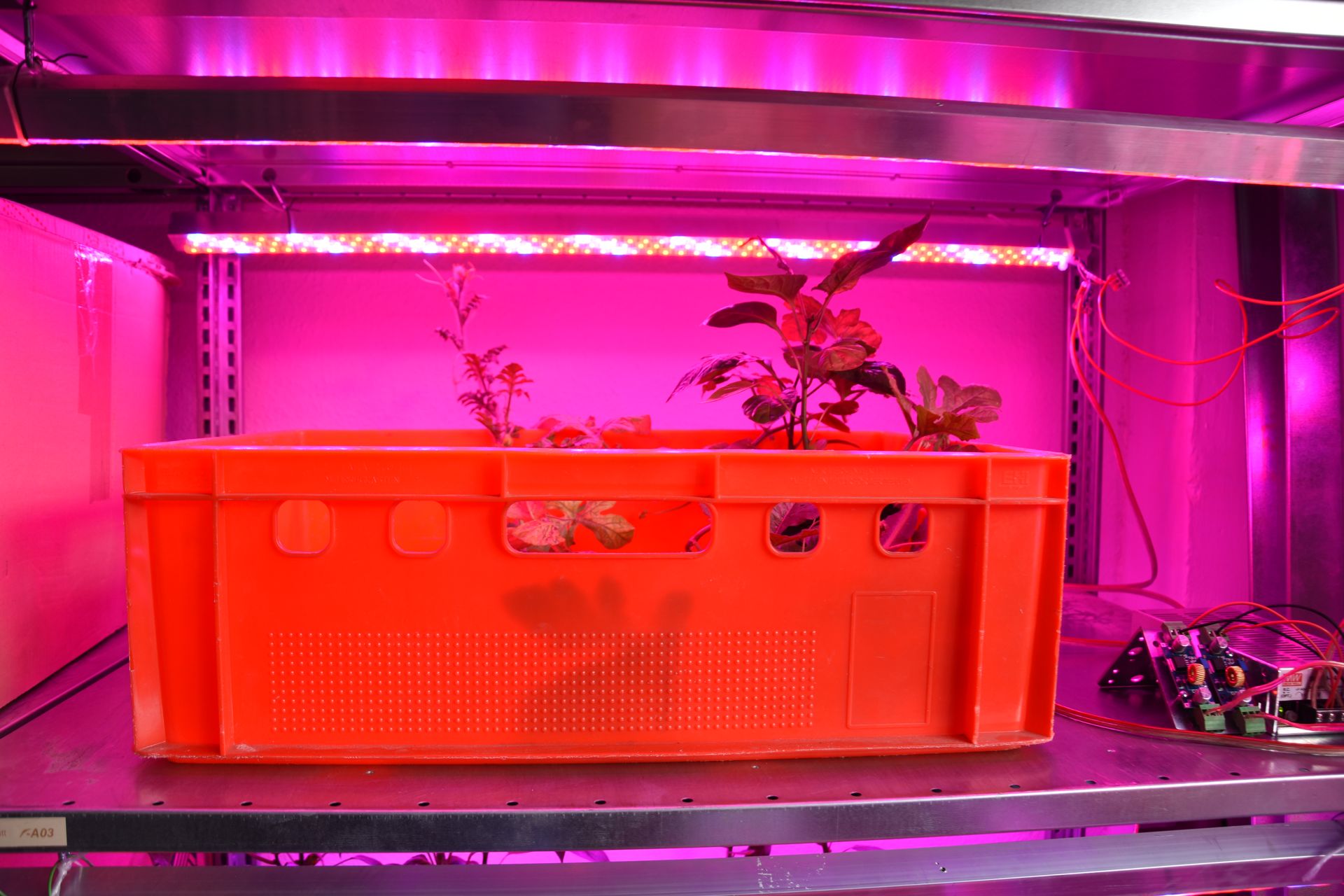
Seen here is a watermelon plant along with two bell pepper plants in a simple configuration with two angled grow lamps. This will be developed into a single frame-based setup that can be mounted directly into the shelves, along with the cooling and air circulation solution.
Still under heavy development is the shelf-based irrigation setup for soil-based indoor farming. A prototype for this will be finalised over the coming weeks, with the first test setups for hydroponics and fogponics to be added during that time period.
As target crops to grow in the indoor farm, we are looking at bell peppers, water melons, rice, strawberries, various herbs and more. The light controllers we'll be integrating should allow us to adjust the lighting and watering in each shelf section to optimise the conditions for each plant type.
Please stay tuned for further updates as the project escalates from this early R&D phase into an industrial level.
